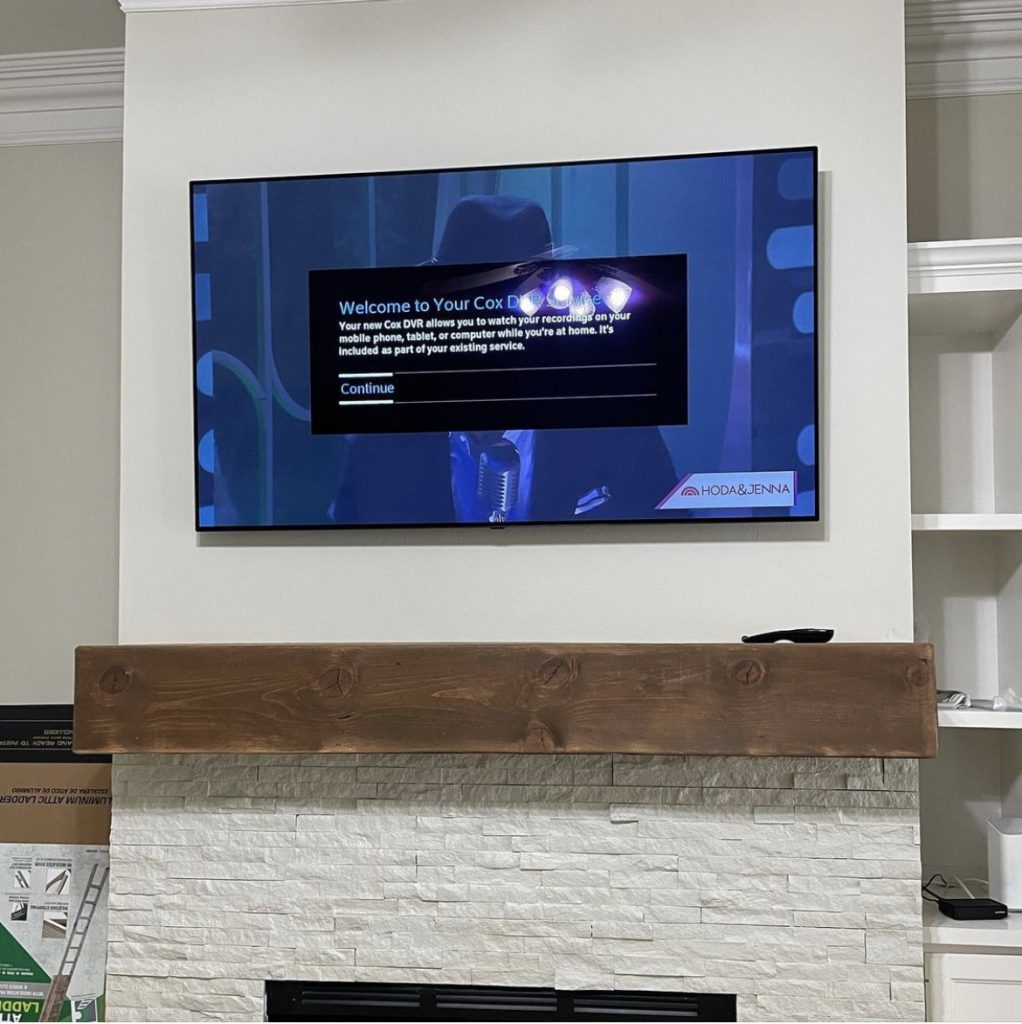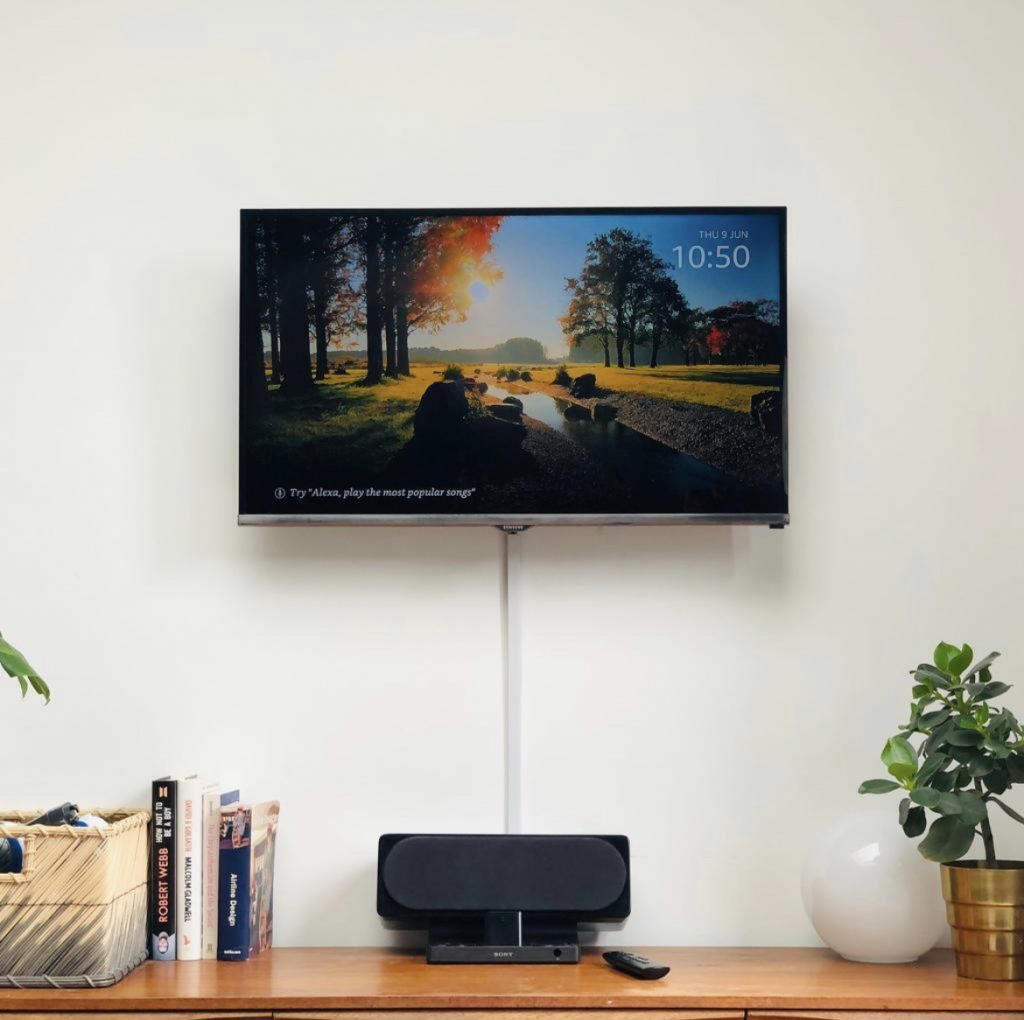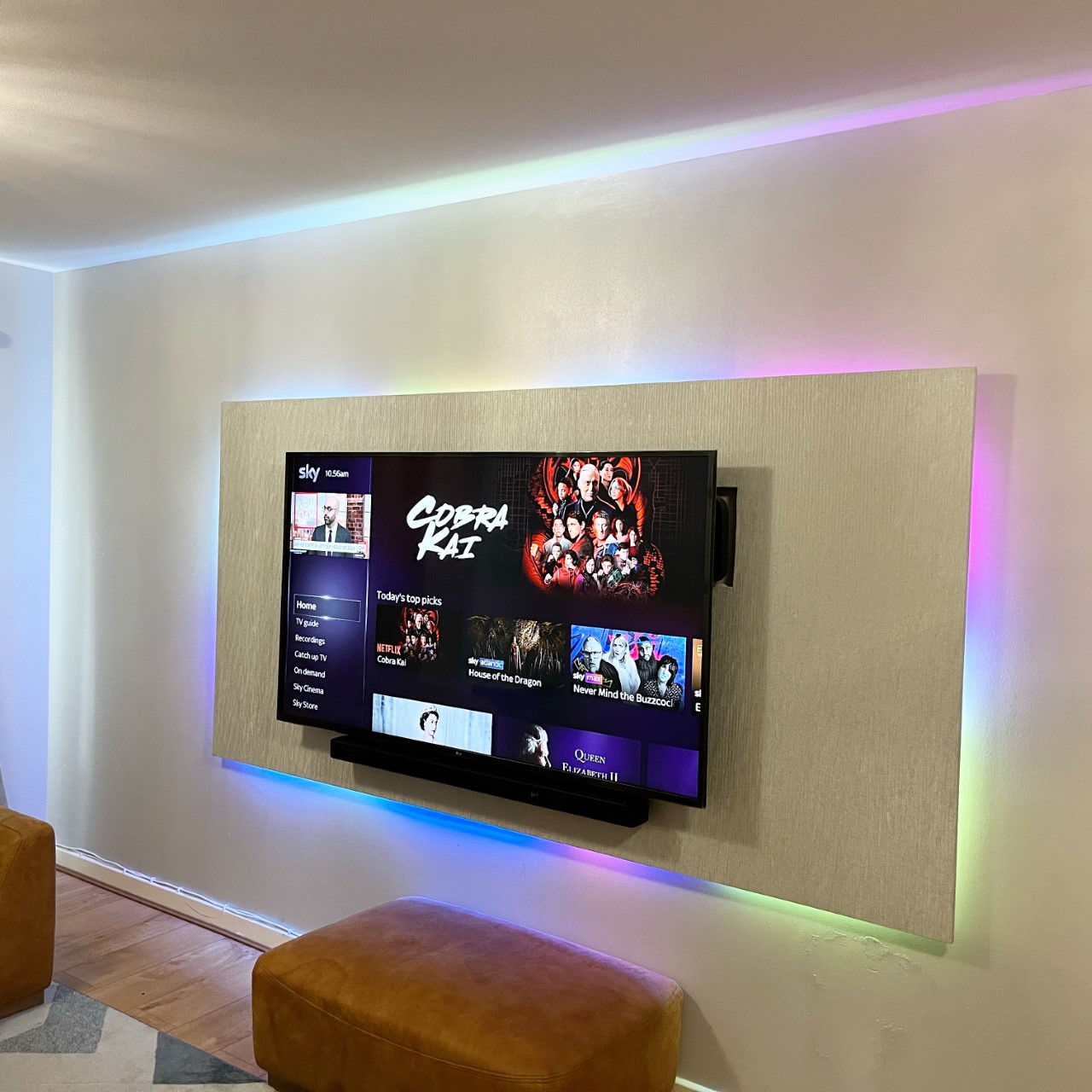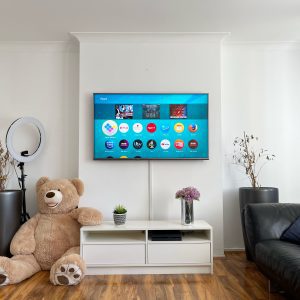Whether you’re mounting your TV on the wall to save space or you prefer the look of it, here how to do it safely and securely
What’s the best wall mount for a TV?
There are three basic types of brackets to choose from: fixed, tilt and full motion. One type isn’t better than another and which one you choose depends on where you plan to fix your TV and how much you think you’ll need to adjust it.
- Fixed The most basic mounts fix your TV flush to wall. Once it’s mounted you won’t be able to move the TV at all.
- Tilt These mounts let you angle the screen a few degrees up or down. This is useful if the TV is going to be high on the wall and you want to angle the screen down towards the viewer.
- Full motion These mounts usually have a moveable arm that allows the TV to extend out from the wall and be angled towards the viewer. It’s handy if you need to put the mount in a corner where the TV wouldn’t be able to sit flush or you just want to have more flexibility in how you arrange your living room.
To make the DIY a bit easier, you can buy mounts with built-in spirit levels. The last thing you want after going through all the effort is a wonky telly.
Once you’ve chosen what type of wall mount will work best, you need to make sure it’s compatible with your TV. Thanks to VESA this is a simple process.


Can you attach any TV to a wall mount?
Pretty much. Almost every TV that’s released has holes in the back to screw a wall mount, too.
On the listing for a TV online or in store, you’ll see measurements for a VESA mount, and this is a sure sign you can attach a wall mount.
What is VESA?
VESA is the Video Electronics Standards Association, and it established a mounting interface standard so you can see easily whether a wall mount is the right fit for your TV.
All VESA-compliant mounts have a measurement in millimetres that tells you whether the holes in the bracket will match up with the holes on the back of your TV. You can check your TV’s manual or a product listing online to determine whether a mount is compatible.
Making sure your mount can take the weight
When you’re shopping for a mount, make sure it supports the size and weight of your TV. Just because the VESA measurements line up it doesn’t necessarily mean that the mount can handle your size of TV, so it’s worth checking.
You should also make sure the mount is sturdy enough to cope with your TV’s weight. Newer TVs are thin and light, but if yours is a bit older then it’s probably heavier, too. Check our reviews or your TV manual to see how much it weighs.
How much should you spend on a wall mount?
The cost of wall mounts can vary enormously – prices can range from £20 all the way up to £160. But if all are VESA-compliant and fit your TV’s size and weight, why pay more?
As you might expect, full motion mounts cost more than fixed ones and some pricier ones will mean there’s less of a gap between your TV and the wall. Some more expensive brackets have more points of articulation, giving you greater control over exactly how your TV is positioned.
If you get a lot of glare from a window and you know you’ll often be adjusting the angle and position of your TV, it’s probably worth heading to a shop and asking to try a bracket. If it’s stiff and difficult to manipulate it may not be the best choice for you, particularly given that it will only get harder to move when there’s an 18kg TV bolted to it.


What tools will you need?
You’ve got your mount and your TV. Now, most of what you need you might have knocking around the house. Here are the tools required:
- Drill You’ll need the right drill bits: masonry ones if you’re mounting the TV onto brickwork and twist bits for anything else.
- Screwdriver You’ll need at least one screwdriver to fix the bracket to the back of your TV.
- Spirit level You might not need one of these if there’s one in your wall mount already, but it wouldn’t hurt to have one handy anyway. You could always download a spirit level app onto your phone if you don’t fancy buying one.
- Stud finder The bolts in mounts go deep into your wall to make sure your TV is secure. Use this tool before you drill to make sure you drill into the wooden studs that support hollow walls. You won’t need this if you’re mounting your TV onto brickwork. Most stud finders will find pipes and wiring, too.
- Tape measure You’ll need one of these to make sure the holes are the right distance apart and to measure how high you want the TV to be on the wall.
- Spanner Depending on the mount you have, you may need to secure some of the bolts with a spanner.
Step-by-step guide to mounting your TV
Before you start, think about whether you want to hide your cables. If you want to put them through the wall, you’ll probably need to make a hole before you mount the TV to thread them through.
- Figure out where you want the TV to go on your wall
Once you’ve got your TV fixed to the wall you aren’t going to want to move it again, so make sure you put it in exactly the right place. Ideally, you want three people to do this: two to hold the TV and a third to lounge in an armchair to direct proceedings: ‘Higher, lower, a bit to the left, perfect.’
Another option is to get a big sheet of paper and cut out the exact shape and size of your TV and hold that onto the wall instead.
When you’re happy with the position, mark the edges and corners with a pencil or tape. - Fix the bracket to the wall
Hold the bracket to the wall and mark where the bolt holes are. When you make the holes ensure the bracket is straight using a spirit level.
When you’re happy with the bracket’s position and that your marks are in the right place you can start drilling. Start by making pilot holes and then use a drill bit that matches the size of the bolts that came with your mount to make the holes. - Fit the bracket to your TV
Wall mounts come in two parts – you’ve already fitted one to the wall and now you can fix the other part to your TV.
Most mounts come with many different sizes of bolts for different TVs, so don’t worry if the first few you try don’t fit. Once you have the right ones, use them to attach the mount to the four holes on the back of your TV. Some wall mounts also have fastening screws that help secure the TV once both parts of the bracket are connected. Fit those loosely; you’ll tighten them further once the your TV’s in position. - Mount the TV on the wall
You’re now ready to put the TV on the wall. We’d recommend plugging all the cables you need into the back of the TV before you do this next step as space may be tight once your TV is flush to wall.
Different mounts will have different mechanisms for attaching the two sections but, generally, the TV bracket will have hooks that slide behind the part of the bracket on your wall.
It’s good to have some help here because you don’t want to come this far just to drop your TV. Once the two parts are together, tighten the fastening screws to hold everything in place.




